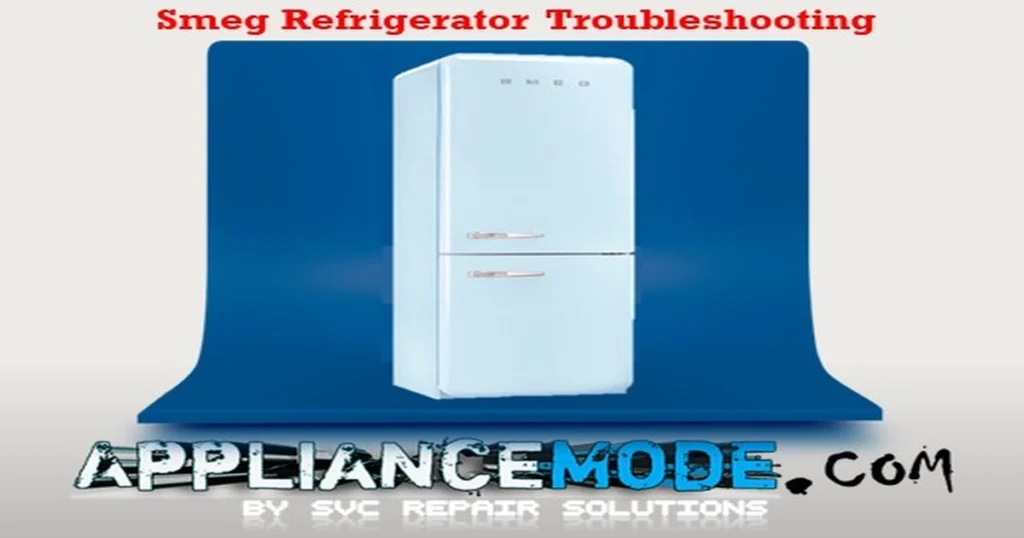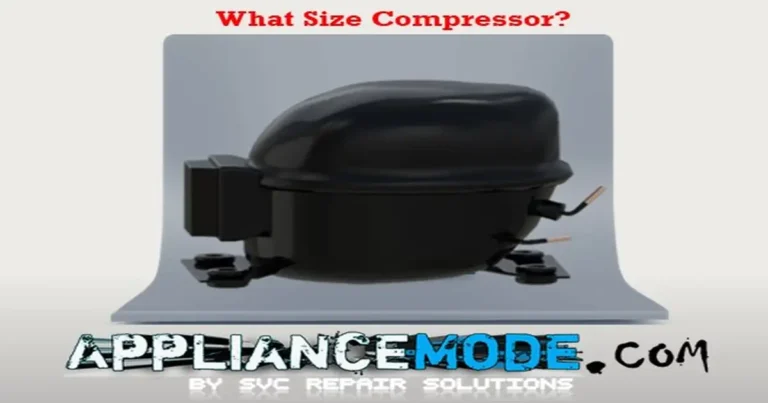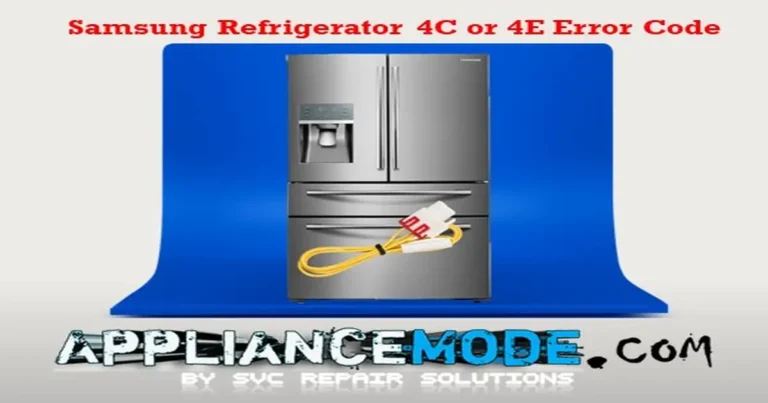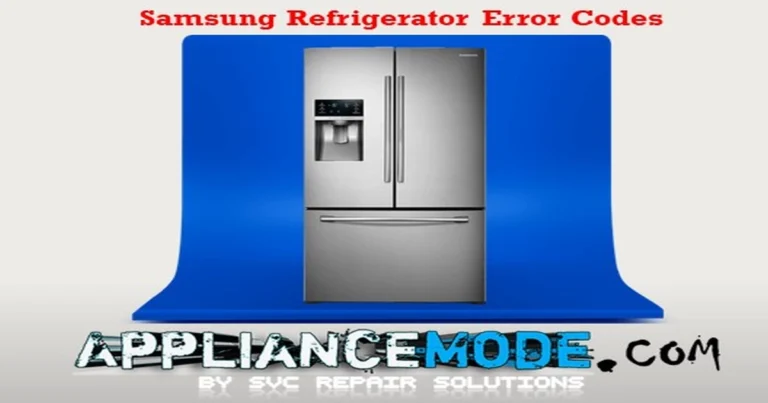Get Your Smeg Refrigerator Back Up and Running: A Troubleshooting Checklist

SMEG Refrigerator TEST CYCLE
The test cycle can be activated within the first 10 seconds of the appliance turning on.
How to activate the test cycle:
- Press the Fridge Super Cold or Freezer Fast Freeze Button for 8 seconds until
- The third sound coming from the appliance is recognized.
- The test starts.
- Release the button, and the LED for lower temperatures is illuminated.
1: Activation step:
- Press the Super button.
2: Go to the next step:
- Press the temperature adjustment button.
3: Exit the test cycle (the test cycle can be stopped after one of the following actions has occurred):
- The appliance disconnects.
- 5 minutes that no one acts on the control panel (no button is pressed).
- The end of the defrost step
Carrying out the Test Cycle:
Step 1:
NTC sensor control test: If the alarm led starts flashing, the appliance has detected an error with the NTC sensor.
Step 2:
Fan test (LED 24 starts flashing): Press the Super button and check the fan operation.
Step 3:
Damper motor test (LED 22 starts flashing): Press the Super button to open and close the damper. When the damper is open, the alarm light should be illuminated.
Step 4:
Defrost Resistance Test (LED 22 and 24 start flashing): Press the Super button to activate the defrost resistance.
Step 5:
Damper Resistance Test (LED 20 starts flashing): Press the Super button to activate the damper resistance.
Step 6:
Compressor test (LED 20 and 24 start flashing): Press the Super button to activate the compressor.
Step 7:
Defrost Cycle Test (LED 20 and 22 start flashing): Press the Super button to activate the defrost cycle.
SMEG Refrigerator Troubleshooting
The appliance does not work
Causes:
- Power supply problem.
- The appliance is disconnected.
- The supply voltage is 160 volts.
- The main switch does not work; replace the main switch.
- Check the wiring.
- Check the compressor.
- Check the temperature sensors.
Solutions:
- Check if the power supply voltage is okay and replace the electronic card.
- Replace the main switch.
- Replace the faulty cable or wiring.
- Replace the sensors if necessary.
The fridge compartment does not cool enough
- There is no circulation of air in the fridge and freezer compartments when the compressor is running.
- Noisy fan.
- The presence of plenty of moisture in the air outlet vents of the fridge compartment
- Inadequate cooling capacity, even though there is air circulation.
Causes:
- The fan.
- The fan power supply.
- The fan is mechanically locked.
- There is no contact or improper connection.
- Check the wiring.
- The light switch malfunctions.
- The Damper.
- The damper thermostat malfunctions.
- The damper is mechanically locked.
- The evaporator area
- Damper microswitches have problems.
- Faulty NTC.
- The fan blades touch the fan cover.
- The vents could be blocked by food.
- Damper thermostat settings might be inappropriate.
- The duct seal is damaged
Solutions:
- Replace the fan if necessary.
- Unlock the fan.
- Repair the contacts.
- Replace the switch.
- Replace the damper motor or microswitch.
- Unlock the damper.
- Check that there are no ice formations in the evaporator area.
- Replace the sensor.
- Fix the fan if necessary.
- Advise the customer not to place food against it.
- Select a cooler setting and advise the client to consult the instruction booklet.
- Replace the seal if necessary.
Fridge and freezer compartments do not cool enough
Inadequate cooling capacity even though the compressor, fan, and Damper thermostat are perfect.
Causes:
- The compressor inputs current.
- Leaks in the refrigeration circuit.
Solutions:
- Check the COMPRESSOR
- Check the relay or overload protection.
- Replace the compressor if necessary.
- Stop the leaks and repair the refrigeration circuit.
The fridge compartment cools too much
- too-cold temperatures.
- Food freezes in the fridge compartment.
Causes:
- Too-low temperatures have been selected.
- Faulty damper.
- Faulty temperature sensor.
- Check that food was not positioned directly in front of the air outlet vents in the fridge compartment.
- The damper is locked and remains in an open position.
Solutions:
- Adjust the temperature.
- Replace the damper.
- Replace the temperature sensor.
- Remove the damper locking elements.
Condensation is forming inside the fridge compartment.
- Condensation is forming inside the fridge compartment.
- Condensation forms on some food and on the fridge’s internal walls.
Causes:
- The cooling capacity in the fridge compartment
- The compressor inputs current.
- Leaks in the refrigeration circuit.
- The door seals.
- The fridge compartment was overloaded.
- Air outlet vents inside the fridge compartment are blocked by food.
Solutions:
- Check the relay and overload protection.
- Check the compressor.
- Replace the compressor if necessary.
- Stop the leaks and repair the refrigeration circuit.
- Replace the faulty door seal.
- Advise the customer not to place food or anything else directly against the aeration vents inside the fridge.
Frost and ice are forming in the freezer compartment
- Frost and ice form in the freezer and fridge compartments.
- Layer of ice on frozen food.
- Temporary formation of ice on frozen food.
- Formation of ice in the evaporator.
Causes:
- Faulty fridge and freezer door seals
- Faulty evaporator sensor
- The evaporator is incorrectly positioned.
- Drain tubes blocked by polyurethane foam (during the foaming process)
- The heater has no contact with the evaporator.
- Continuous work because of the faulty relay board.
- Two polystyrene spacers in the evaporator are positioned improperly or are missing.
- The evaporator sensor is incorrectly positioned.
- Faulty defrost heater
- Faulty electronic board.
Solutions:
- Replace the door seal if necessary.
- Replace the evaporator sensor if necessary.
- Inform the customer that the formation of frost on food is caused by the high humidity of the air present in the appliance.
- Position the evaporator correctly, making sure it touches the plastic tray.
- Try to free the tube from the foreign body.
- Position the resistance correctly.
- Correctly position the two polystyrene spacers in the evaporator.
- Place the sensor correctly.
- Check the connections of the defrost heater and replace them if necessary.
- Replace the main PCB.
Excessive noise
- Popping sounds.
- Excessive noise
Causes:
- The fan motor is noisy.
- The fan blades touch the fan cover.
- Fan vibration.
- The fan blades go against the wiring.
- Normal noise level during the defrost phase.
Solutions:
- Replace the fan.
- Tighten the fixed screws or replace the seal.
- Position the different parts properly.
Water leakage caused by a broken drainage pipe
- Water leaked from the rear of the appliance. Possibility of ice on the evaporator.
Causes:
- Damaged drainage pipe or with the presence of cracks.
Solutions:
- Remove the old tube and fix the new one. Make sure that the rubber end of the inner tube is fixed properly and that it is not damaged. If not, use silicone to prevent water leaks.
- Use the original drainage pipe.
Find out more about Smeg product error codes. Learn more today.



